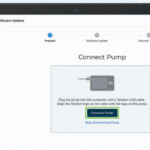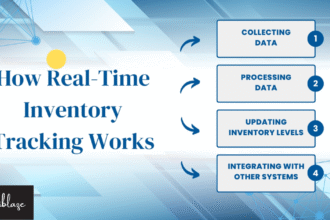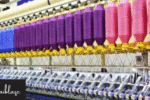The fashion industry depends on accurate tools to create well-fitting garments. Pattern-making software helps designers and manufacturers save time and reduce mistakes. The PAD System is one digital tool used for this purpose. Many schools and companies are starting to use the PAD System for pattern design. This article will explore whether it has become a standard in the fashion industry.
Have you ever wondered how clothing designs turn into real products quickly? Today’s fashion world needs fast, innovative, and reliable pattern-making solutions. Software like PAD System helps professionals bring creative ideas to life faster. The question is—does everyone in the industry rely on this one system? Let’s look closer and discover the truth behind its rising popularity.
PAD System offers digital tools for creating, editing, and adjusting garment patterns. It helps users save fabric, reduce waste, and quickly produce patterns. Many Asian manufacturers and fashion schools have already adopted the PAD System widely. Depending on location and company needs, other software tools are also in use. We’ll compare these systems and see where the PAD System stands in the market.
Table of Contents
Understanding the PAD System

The PAD System helps fashion professionals create digital patterns for garments easily. It replaces the need for paper patterns with bright and clean software. Designers use it to make clothing patterns faster and more accurately. The system gives complete control over pattern sizes and clean cutting lines. Many people trust it because it saves time and reduces minor errors. PAD works well for both small designers and large clothing companies, too.
The PAD System can design, grade, and adjust sizes. It allows pattern makers to switch between different body measurements quickly. This tool also creates digital markers to reduce fabric waste in production. Its features help improve workflow and lower mistakes in every step. It also gives users a clean view of each pattern in layers. These benefits make the PAD System a handy fashion tool today.
Fashion schools often use the PAD System to teach students digital pattern-making. It gives students real-world experience with tools used in many fashion jobs. The system’s simple layout makes it easier for beginners to understand patterns. Students learn how to design, edit, and plan complete outfits using it. Schools prepare students for work in companies that use digital design tools. That’s why the PAD System is now part of many teaching programs worldwide.
The Role of Pattern-Making in the Fashion Industry
Pattern-making is the first step in turning a design into clothing. It gives clear instructions for cutting and sewing every fabric piece correctly. Good patterns help clothes fit better and look more professional on people. Fashion companies need accurate patterns to make stylish and comfortable clothes quickly.
Modern fashion brands use digital tools to create patterns with great precision. This helps designers test ideas and make changes before cutting any fabric. It also saves time by reducing the need for many paper samples. With digital pattern-making, fashion teams can work faster and smarter every day.
Adoption of the PAD System in the Global Market
The PAD System has become very popular in many Asian fashion markets. Many clothing factories in China and Hong Kong use PAD every day. They like its simple design, low cost, and strong performance features. These factories use it to save fabric and reduce design mistakes. Fashion brands trust PAD because it works well for fast production needs.
As a result, more companies across Asia now choose PAD over others.
Fashion schools in different countries also teach students how to use PAD. They include it in their courses to give a real-world learning experience. Students learn how to design and adjust patterns utilising this system. This helps them get ready for jobs that use digital fashion tools. Fashion schools in Europe and Asia both support PAD in their classes.
This builds a new generation of designers who know the PAD System well.
Small and medium fashion businesses in many countries are now exploring the use of PAD.
They like that it’s cheaper and easier to learn than others. Even without big budgets, these companies can use digital tools like PAD. It helps them grow fast and easily compete with large fashion companies. PAD gives them modern design tools without high costs or long training. So, its global market is growing beyond just large manufacturers and schools.
Challenges and Limitations
The PAD System does not have strong support in Western fashion markets.Many companies in Europe and America still prefer older, known software tools.This makes it harder for PAD to grow in those regions. Companies often choose tools they already trust and know how to use.
PAD also lacks some features found in high-end 3d design software. Its 3d tools work well, but look less real than others. Designers who focus on 3d visuals may choose different software instead. Also, training materials for PAD are harder to find in some countries.
The Future of the PAD System

The PAD System will likely grow as more fashion companies go digital. Many brands want faster tools that help reduce waste and improve speed. PAD offers practical features that match the needs of modern production teams. As demand rises, more factories will switch to digital systems like PAD. This change will help the PAD System expand into new global markets. Its affordable cost makes it an excellent option for smaller fashion companies.
PAD developers may soon add more smart tools that use artificial intelligence. AI can help designers make quicker decisions and create better patterns easily. These features will save more time and make the system more advanced. Cloud-based updates also allow teams to work together from any location. PAD will grow stronger with tools that support both remote and teamwork. This will make it more helpful for students and professionals worldwide.
Sustainability is becoming more critical in today’s global fashion industry trends. The PAD System can grow by adding tools that track fabric waste. This helps brands reduce costs and support eco-friendly production practices, too. Future updates may include reports that show the impact of each design. This would help fashion brands make more intelligent and greener business choices easily. PAD has strong potential to lead digital fashion with helpful, green features.
- PAD lets users create digital patterns quickly with accurate measurements and shapes.
- You can grade patterns into different sizes with just a few steps.
- It helps save fabric by arranging pattern pieces in innovative layouts.
- PAD shows 3d garment views so that designers can check fit early.
- The system works well with other machines and can easily design software.
FAQ’s
What is the PAD System used for in fashion design?
The PAD System helps create digital patterns with speed, accuracy, and flexibility. Designers use it to grade sizes and reduce fabric waste easily. It also allows quick changes and saves time in production workflows.
Is the PAD System considered an industry standard globally?
The PAD System is widely used in Asia but less so in Western countries. Some schools and factories prefer other software with more global recognition. However, PAD is growing fast and gaining more users each year.
Why do many companies choose the PAD System over others?
They like its low cost, friendly design, and useful core features. It also supports pattern design, size grading, and 3d previews well. Small brands enjoy how easily they can learn and use it.
Do fashion schools teach the PAD System to their students?
Yes, many fashion schools use PAD to train future fashion professionals. It helps students simply learn digital pattern-making. This prepares them for jobs in companies using modern design tools.
What are some limitations of the PAD System today?
PAD has fewer advanced 3d tools compared to some design software. It also lacks broad support in Europe and North American markets. Training resources outside Asia are limited and harder for some use
Conclusion
The PAD System helps many people make patterns faster and more easily. Fashion designers and schools use it to teach and create better clothes. It saves time, reduces fabric waste, and improves the working process. Many companies like its simple tools and low cost for daily work. That’s why PAD is growing fast in many parts of the world.
PAD is popular in Asia but is still growing in other countries. Some big companies still use older software they know and trust more. PAD can become a standard if more people start using it. It needs better training, support, and updates to reach more markets. With time, PAD could be used by most fashion makers worldwide.
The fashion world needs strong tools like PAD to make patterns better. PAD helps new and small brands work faster without considerable costs today. Schools teach PAD to help students learn essential skills for the future. It may not be the top standard now in every place. But PAD has a bright future in the global fashion industry ahead.










